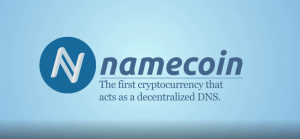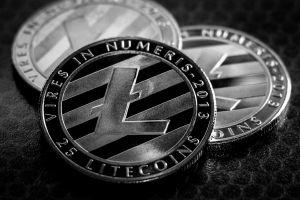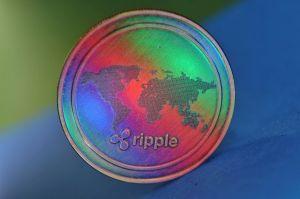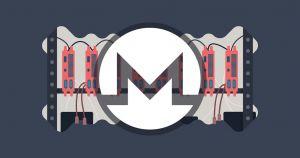What Are Altcoins and How Do They Differ From Bitcoin?
There are more 2000 altcoins in the market at the moment. What are they? And more importantly, how do they differ from Bitcoin?

So what are altcoins anyway? Are they any good, or are they just cheap replicas of the original, the one and only Bitcoin?
You may be surprised to know that the first altcoin to enter the market alongside Bitcoin was created in 2011. Namecoin (NMC) was intended to decentralize domain name registration on the web, and was also used as an alternative digital currency.

Today, more than 2000 altcoins circulate in the crypto markets. You may wonder if we need so many of them, but the truth is that it's just free market competition in action. Everyone is free to launch his or her own cryptocurrency. And everyone who does so thinks or at least pretends that they have something unique to offer. But in practice, most of them are either cryptocurrencies or utility and reward tokens for certain apps and platforms. Despite the high numbers, only the strongest ones will survive to reach mass adoption.
The growing competition doesn't hurt Bitcoin though. In most cases, it only pushes the cryptocurrency space forward. Besides, not all altcoins are direct takes on Bitcoin, and they often come with unique value propositions.
In this guide, you will get to know the top ten altcoins, what do they do and what do they want to achieve. The altcoins discussed in this article are Litecoin (LTC), Ethereum (ETH), EOS (EOS), Ripple (XRP), Tether (USDT), IOTA (MIOTA), Cardano (ADA), Bitcoin Cash (BCH), Tron (TRX), and Monero (XMR).

Litecoin (LTC). Like Bitcoin, Litecoin is a digital currency with a sole objective - decentralized digital payments. Created in 2011 as an answer to perceived Bitcoin shortcomings, it offers faster transactions, lower fees, and a higher supply of coins. Litecoin’s founder and former Google’s engineer Charlie Lee puts it simply: “BTC is digital gold. LTC is digital silver.”
See our Litecoin guide to learn more.
Ethereum (ETH). Ether is a more advanced, second-generation decentralized digital currency. It runs the Ethereum platform, which is also called “the world’s computer.” It is used to execute smart contracts, decentralized applications (dapps), and is also the most popular digital currency to fund initial coin offerings (ICO’s). Like other cryptocurrencies, it is also widely accepted as a means of payment.
Read our quick Ethereum guide to learn more about it.
EOS Token (EOS). EOS is another second-generation blockchain and semi-decentralized digital currency designed to power dapps and DAO’s (decentralized organizations). It competes with Ethereum for the title of the worlds best smart contract platform. Fundamentally, EOS is faster and more scalable than Ethereum, but it sacrifices decentralization for such functionality. For this reason, EOS is governed by delegated proof-of-stake consensus (dPoS) and uses EOS constitution to define platform rules. Besides, EOS is way younger than Ethereum and is not yet widely accepted.
See our introduction to EOS for more information about the platform.
Bitcoin Cash (BCH). Like Litecoin, Bitcoin Cash is a fork of Bitcoin which was born out of notorious hard work during 2017 summer. Its founders call it the “real Bitcoin.” Ultimately, BCH tackles Bitcoin’s slow transaction times, high energy consumption, and fees issues, yet so far it has failed to gain the community’s recognition. Like Bitcoin, it is meant to be a digital currency for payments.
Read more about Bitcoin Cash here.

Ripple (XRP). XRP is another digital token for payments. Besides that, it is also used by Ripple Labs as a source of liquidity for cross-border real-time fiat payments. For this reason, it is also often referred to as “banksters coin.” The coin itself is designed to be the fastest and most scalable digital asset.
Tether (USDT). Tether is the most popular stable digital asset in the space. It is a stablecoin tied to the US dollar at a 1:1 ratio. One Tether will always be worth one USD, and it can be redeemed for fiat at any time. Essentially, it combines the benefits of the blockchain technology and stability of fiat currencies, thus reducing volatility in otherwise highly unstable cryptocurrency markets. Traders often use it to hedge their funds during uncertain periods. Besides, it can be used as a means of payment, since it can be sent anywhere in the world via the blockchain. Nevertheless, unlike Bitcoin or Ethereum, Tether is highly centralized, and its transactions can be halted anytime by Tether Company Limited.
Click here to read more about Tether.
TRON (TRX). TRON is a semi-centralized digital currency for digital entertainment and content generation systems. The TRON protocol offers scalability, high-availability, and high-throughput computing (HTC) support for making decentralized applications in the TRON ecosystem. Besides, it is compatible with the Ethereum smart contracts. The primary goal of the network is to decentralize the delivery on the web. The TRX coin is used to share content on the network and compensate content creators who contribute to the network. Therefore, it can be classified both as a digital currency and utility token.

Monero (XMR). It is a decentralized privacy-oriented cryptocurrency designed to make untraceable payments. It is one of the older currencies in the market as it was launched in 2014. Every XMR user can control his or level of visibility and personal data. Besides, it is way faster and more scalable than Bitcoin. Despite that, the coins privacy features are not always used for the good, as it is indicated by its growing popularity on the dark web and other nefarious incidents.
Read a more extensive primer on Monero here.
Cardano (ADA). ADA is the native token of the Cardano platform. It is designed to be a third-generation cryptocurrency capable to power smart contracts, dapps, side chains, metadata, and distributed multi-party computation. Although still in development, the project aims to be a new, more capable, faster, scalable, and energy efficient Bitcoin with uncompromised security.
Click here to read more on Cardano.
IOTA (MIOTA). IOTA is a novel project for the future internet of things (IoT). It enables feeless and fast machine-to-machine transactions between IoT devices. Although that functionality is still slightly ahead of its time, MIOTA can also be used as cryptocurrency for regular payments, which makes it a legit digital currency.
Discover more about IOTA here.
As seen in the examples above, most popular cryptocurrencies differ in their ideas and use cases. Although some of them have more specialized niche than others, mostly they seek to gain an advantage over Bitcoin by trading off certain technological aspects. Looking below the top ten coins, you are likely to find more dapp platforms and payment currencies, as well as utility and asset-backed tokens with even more specific use cases.
Now that you are more familiar with the most popular altcoins let’s take a look at how to obtain them.
